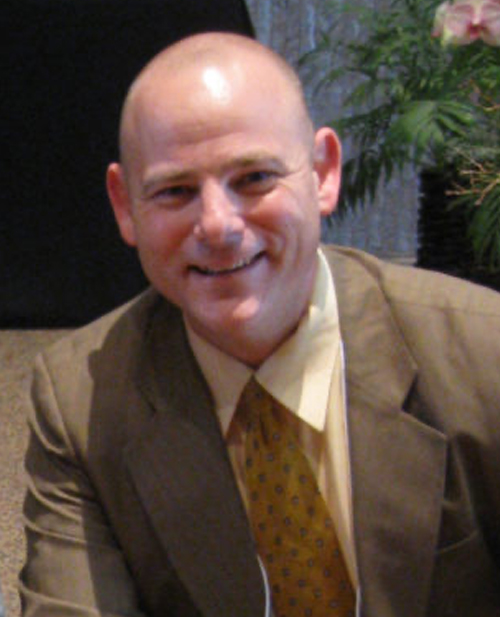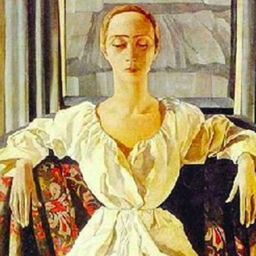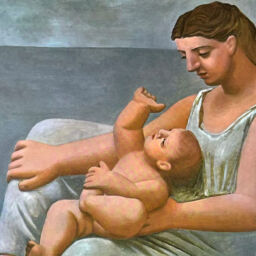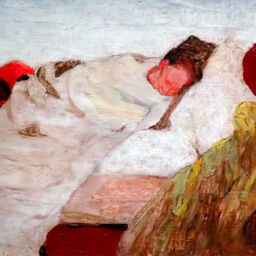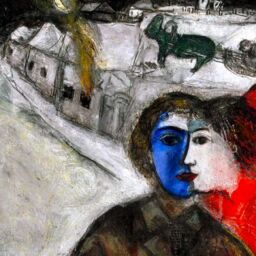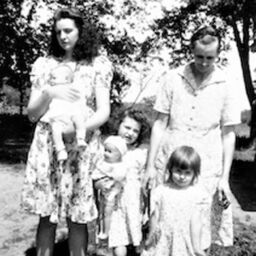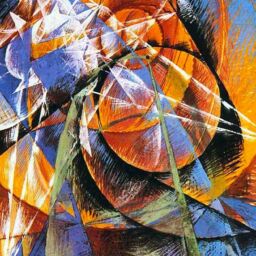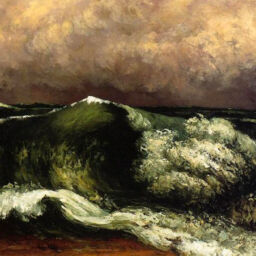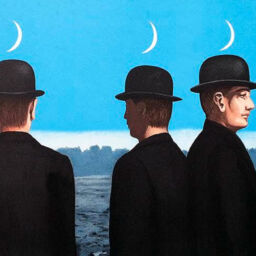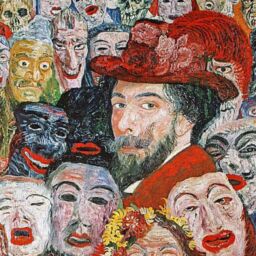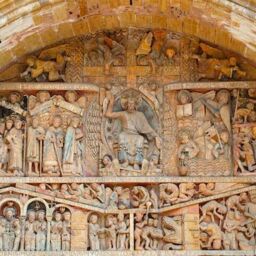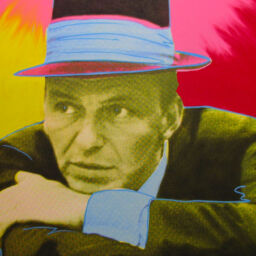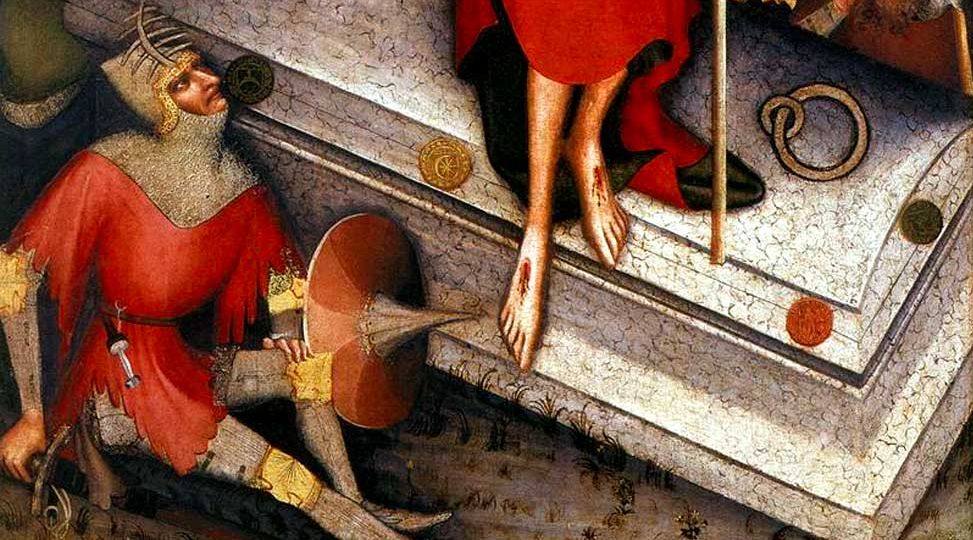
The Archetypal Leader
The Role of Introversion in Military Leadership
Kiley Laughlin, April 16, 2014
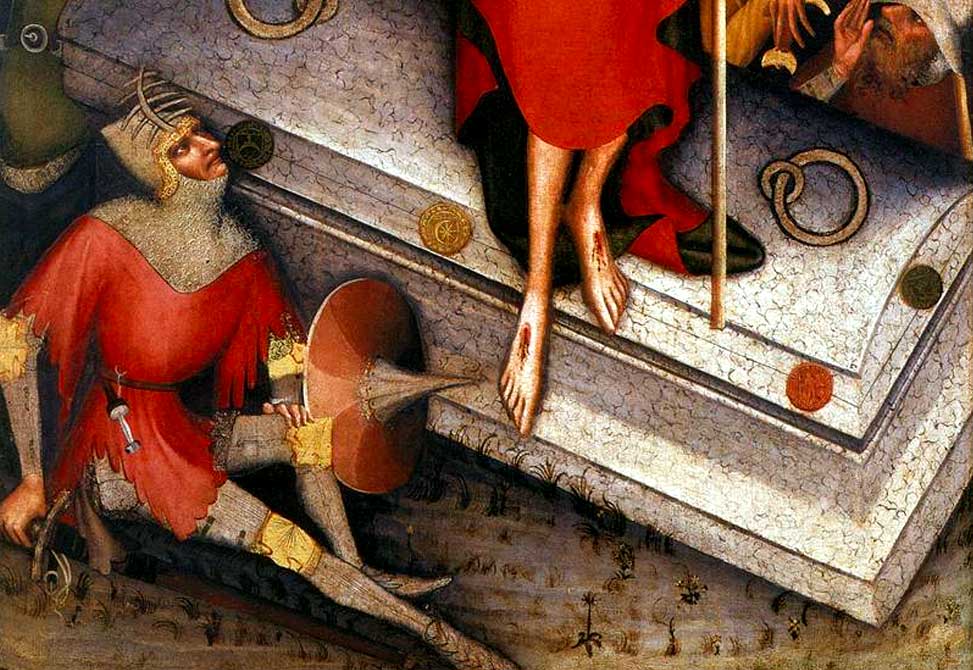 As an introvert and a career soldier with over twenty years of military service, I have thought long and hard about how introverts contribute to the Army and the military’s organizational culture as a whole. On the surface, military culture seems to have a predilection for extraversion, since the very act of waging war, with its emphasis on objective and measurable results, could be construed as an extraverted undertaking. In this way, it is easy to appreciate why the general public may view the military as an extraverted organization, for reasons which I largely attribute to its assigned mission and dedicated functions (e.g., warfighting, national security, etc.). The military even appears to market for extraverted qualities by targeting a certain type of personality. However, anecdotal and empirical evidence suggest that introverts comprise just as substantial a percentage of the military’s population, including a disproportionately high number of senior leaders. I think that one could reliably attribute the so-called extraverted bias or ideal to a misunderstanding or misrepresentation of the typological differences between extraversion and introversion and I would ascribe the general public’s misunderstanding of the military’s psychological attitude to the latter’s own collective persona or mask.
As an introvert and a career soldier with over twenty years of military service, I have thought long and hard about how introverts contribute to the Army and the military’s organizational culture as a whole. On the surface, military culture seems to have a predilection for extraversion, since the very act of waging war, with its emphasis on objective and measurable results, could be construed as an extraverted undertaking. In this way, it is easy to appreciate why the general public may view the military as an extraverted organization, for reasons which I largely attribute to its assigned mission and dedicated functions (e.g., warfighting, national security, etc.). The military even appears to market for extraverted qualities by targeting a certain type of personality. However, anecdotal and empirical evidence suggest that introverts comprise just as substantial a percentage of the military’s population, including a disproportionately high number of senior leaders. I think that one could reliably attribute the so-called extraverted bias or ideal to a misunderstanding or misrepresentation of the typological differences between extraversion and introversion and I would ascribe the general public’s misunderstanding of the military’s psychological attitude to the latter’s own collective persona or mask.
I would like to correct what I view as a popular misconception about the role of introversion in the military. I feel that a better understanding of introversion could help military commanders and staffs avoid group-think by building teams that have different typological preferences, which could assist in addressing the complex problems associated with executing a broad range of operations. Research studies of typological preferences of military personnel paint a more accurate picture of introversion in the ranks.
Extraversion and Introversion
Extraversion and introversion are exponents of psychic life that most people take for granted. They indicate the general attitude of a person’s consciousness and, contrary to popular opinion, are not determinants of behavior patterns like shyness and affability. For instance, introversion cannot be defined solely as the antonym of extraversion. Jung (1923/1971) originally referred to extraversion and introversion as general psychological attitudes:
The introverted standpoint is one which sets the ego and the subjective psychological process above the object and the objective process, or at any rate holds its ground against the object. …The extraverted standpoint, on the contrary subordinates the subject to the object, so that the object has the higher value. In this case the subject is of secondary importance, the subjective process appearing at times as no more than a disturbing or superfluous appendage of objective events. (para. 5)
Jung also referred to extraversion and introversion in terms of psychic energy or libido:
The introverted type directs his libido chiefly to his own personality: he finds the absolute value in himself. The extraverted type directs his libido outwards: he finds the absolute value in the object. The introvert sees everything in terms of the value of his personality; the extravert is dependent on the value of his object. (1914, para. 419)
Extraversion and introversion may be best understood as terms that describe a person’s psychological orientation, that is to say, an extravert’s attention is oriented toward the external world of objects whereas an introvert’s attention is oriented toward the inner world of a person’s own subjectivity. Thus, these concepts ultimately aspire to describe the direction of libido flow—inward or outward. I should also point out that, “The attitude type is rooted in our biological make-up and is much more clearly determined from birth than is our function type” (Jacobi, 1942, p. 19).
Sandra Hirsh and Jean Kummerow (1989) aptly articulated the basic distinction between extraversion and introversion, as follows:
Extraversion is the preference that relates to gathering energy from the world of action and interaction. An extravert …gets energy from people, activities, and things. Extraverts look for stimulation outside of themselves. They tend to have a breadth of interests and to keep an active involvement with people and things. (p. 9)
And conversely,
Introversion is the preference that relates to getting energy from internal sources. Introverts …get energy from inside themselves, using their internal world of ideas, emotions, and impressions. Because of their internal focus, they are inclined to keep their thoughts and ideas to themselves. (p. 9)
Contemporary concepts of introversion and extraversion often distort what Jung said about them. Jung’s extraversion does not per se exclude introversion. In other words, no person is purely an extravert or introvert, but only has an innate tendency toward one or the other. Jung was careful to avoid stereotyping, preferring to emphasize the fluidity of his model. He even went so far as to write, “It is not the purpose of a psychological typology to classify human beings into categories—this in itself would be pretty pointless” (1923/1971, para. 986). Furthermore, Jung made it clear what he was setting out to do with his introduction of psychological types: “Its purpose is to provide a critical psychology. …First and foremost, it is a critical tool for the research worker” (1923/1971, para. 986). Rather than opposites, introversion and extraversion are actually compensatory attitudes of consciousness, as explained by Jacobi: “Where consciousness is extraverted, the unconscious is introverted, and conversely” (1942, p. 20).
Leadership and the Army’s Persona
In 1943, Jung wrote the following:
For, when everything outstanding is leveled down, the signposts are lost, and the longing to be led becomes an urgent necessity. Human leadership being fallible, the leader himself has always been, and always will be, subject to the great symbolical principles [italics added], even as the individual cannot give his life point and meaning unless he puts his ego at the service of a spiritual authority superordinate to man. (1943, para. 248)
Jung’s commentary above encouraged me to consider the different ways his typology may apply to military leadership. I tend to liken those “great symbolical principles” to Jung’s model of archetypes of the collective unconscious, which seem to bear directly on that age-old question: Are leaders born or made? As Jung implied above, the fate of the individual seems to depend on how well one can reconcile certain inborn qualities with the external demands of culture and society, which is not surprising given that Jung wrote the passage during the Second World War. On a personal level, the question is deeply meaningful to me due to my own formative experiences as a member of the United States Army and as veteran of Operation Iraqi Freedom, which has colored my thinking on the matter.
When I joined the Army my confidence was low and my expectations even lower, and even four years into that endeavor my self-doubt persisted. I am a dominant introvert with INTJ preferences. After completing basic combat training and advanced individual training, the Army assigned me to the 7th Special Forces Group located at Fort Bragg, North Carolina. There I found myself surrounded by Special Forces soldiers (i.e., Green Berets) and intelligence professionals, whose personalities, at least based on what I could glean from their exterior, seemed extraverted. As an introvert, I preferred to work alone or in the company of a few select confidantes. However, as a member of a Human Intelligence section consisting of about 15 personnel, working independently was not a viable option. Needless to say, I tried to avoid the very situations that would have enabled me to demonstrate my mettle or gain accolades from my superiors. I didn’t see the point. My extraverted superiors tended to view my introverted tendencies as lack of motivation. Furthermore, my extraverted peers seemed to fare better than me since they had no problem asserting themselves. On the surface, they seemed more motivated and tended to perform more deliberately, whereas I had the tendency of mulling things over prior to deciding on any course of action—a feature of introversion that Sophia Dembling called “The Slow Train of Thought” (2012, p. 29).
I concluded that I simply did not have the requisite attributes to lead. In retrospect, I realize that a number of other members of my section were also introverted, though less obviously so. Furthermore, I now realize that the majority of people in the unit, Green Berets or otherwise, were not necessarily extraverted, but the organization itself wore a collective persona that was extraverted in appearance. In fact, one could apply an extraverted collective persona model to the Army and military as a whole. The military has a role and function determined largely by pervasive social and collective factors. Its persona can be understood as a collective layer of the psyche analogous to a social mask that tends to characterize a particular expectation or societal role, as Jung noted (1928):
But, as its name shows, it is only a mask for the collective psyche, a mask that feigns individuality, and tries to make others and oneself believe that one is individual, whereas one is simply playing a part in which the collective psyche speaks. (para. 245)
It is my contention then that the Army’s overt extraversion is mostly an external feature of the organization, or as I have endeavored to emphasize, a sort of quasi-organizational persona developed as a means to adapt to certain environmental and cultural factors.
One source of evidence supporting the idea of an extraverted mask the Army displays to society can be observed in the stereotypical Army images. What I am referring to is the standard portrayal of the army engaged in combat operations—destroying the enemy and “blowing shit up,” a common phrase in the military. This stereotype, as exemplified by the illustration, “Breakthrough at Chipyong-Ni” (Figure 1), reinforces the Army’s extraverted persona or mask.
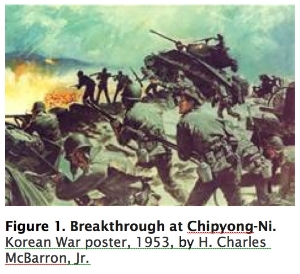 The Army’s ideal leader, according to the Army’s Leadership manual, FM 6-22 (2006), is not defined by either introversion or extraversion. The manual underscores the fundamental traits and values the Army seeks to inculcate in its leaders. Furthermore, the major evaluation criteria for both Non-Commissioned Officer Evaluation reports and Officer Evaluation reports are predicated on FM 6-22. The Army uses the expression “BE—KNOW—DO” to evaluate the leadership ability of its members. “What leaders DO emerges from who they are (BE) and what they KNOW” (p. v). One could say that ”BE—KNOW—DO” comprises the Army’s three pillars of leadership, with each pillar factoring into the leader’s overall performance. The Army assumes that knowledge (i.e., technical competency) and identity (i.e., character) ultimately drive performance, which FM 6-22 further articulates: “Character is based on the attributes central to a leader’s make-up, and competence comes from how character combines with knowledge, skills, and behaviors to result in leadership” (p. v). The manual also suggests that “an ideal Army leader has strong intellect, physical presence, professional competence, high moral character, and serves as a role model,” (p. viii), all leadership attributes that apply to introverts as much as extraverts. Furthermore, there is nothing in the Leadership manual to suggest that the military has a predilection for extraverted leaders. In fact, introverts could meet the criteria of the Army’s leadership requirements model just as well as extraverts. For instance, the said model chiefly underscores what a leader is (i.e., character) and what a leader does (i.e., actions). The Army also seems to accept that most soldiers will develop and improve in their core competencies over time. “Some characteristics are present at the beginning of the leader’s career, while others develop over time through additional education, training, and experience” (2006, pp. 2-4).
The Army’s ideal leader, according to the Army’s Leadership manual, FM 6-22 (2006), is not defined by either introversion or extraversion. The manual underscores the fundamental traits and values the Army seeks to inculcate in its leaders. Furthermore, the major evaluation criteria for both Non-Commissioned Officer Evaluation reports and Officer Evaluation reports are predicated on FM 6-22. The Army uses the expression “BE—KNOW—DO” to evaluate the leadership ability of its members. “What leaders DO emerges from who they are (BE) and what they KNOW” (p. v). One could say that ”BE—KNOW—DO” comprises the Army’s three pillars of leadership, with each pillar factoring into the leader’s overall performance. The Army assumes that knowledge (i.e., technical competency) and identity (i.e., character) ultimately drive performance, which FM 6-22 further articulates: “Character is based on the attributes central to a leader’s make-up, and competence comes from how character combines with knowledge, skills, and behaviors to result in leadership” (p. v). The manual also suggests that “an ideal Army leader has strong intellect, physical presence, professional competence, high moral character, and serves as a role model,” (p. viii), all leadership attributes that apply to introverts as much as extraverts. Furthermore, there is nothing in the Leadership manual to suggest that the military has a predilection for extraverted leaders. In fact, introverts could meet the criteria of the Army’s leadership requirements model just as well as extraverts. For instance, the said model chiefly underscores what a leader is (i.e., character) and what a leader does (i.e., actions). The Army also seems to accept that most soldiers will develop and improve in their core competencies over time. “Some characteristics are present at the beginning of the leader’s career, while others develop over time through additional education, training, and experience” (2006, pp. 2-4).
Archetypal Elements of Leadership
 Thus as I have noted, I initially assumed that leaders were born and not made, but that is not the story’s end. After having departed the Army, I became listless and eight months later, as fate would have it, I found myself donning the uniform yet again. The army seemed to call me back—which coincided with both my own inward desire to return and external circumstances beyond my control, such as an unrelenting recruiter who would not take no for an answer. At this time it seems that something latent was released into my psyche which served to jumpstart my career. No words can adequately or rationally explain the change I went through at the time, nor can I account for what triggered it. It was simply a serendipitous combination of events that Jung would call kairos—the “right moment” (1957, para. 585).
Thus as I have noted, I initially assumed that leaders were born and not made, but that is not the story’s end. After having departed the Army, I became listless and eight months later, as fate would have it, I found myself donning the uniform yet again. The army seemed to call me back—which coincided with both my own inward desire to return and external circumstances beyond my control, such as an unrelenting recruiter who would not take no for an answer. At this time it seems that something latent was released into my psyche which served to jumpstart my career. No words can adequately or rationally explain the change I went through at the time, nor can I account for what triggered it. It was simply a serendipitous combination of events that Jung would call kairos—the “right moment” (1957, para. 585).
I eventually applied to Officer Candidate School, and not long after, I commissioned as a second lieutenant. As I advanced in my career, I seemed to have an advantage as an officer that hadn’t served me as well as an enlisted soldier. Officers are generalists whose roles and responsibilities are more geared toward management and planning rather than operating. Operating is more of a specified activity of enlisted and warrant officers; and I seemed to fare better at managing and planning than operating. In joining the military intelligence branch of the Army, I experienced more advantages of introversion. Specifically, a few select features of my dominant function, introverted intuition (Ni), were instrumental to my success, such as the ability to discern patterns in the greater whole, being able to “focus on the subjective, internal world of the unconscious to find connections and abstract relationships between the contents of the unconscious and/or the environment,” and an innate desire to “discover underlying significance, systems, and meaning” (Haas & Hunziker, 2006/2011, p. 63). These two external factors— military intelligence and officership—seemed to accelerate my professional development by dovetailing with my innate strengths.
Thus, despite my initial doubts, I was able to demonstrate my mettle to the Army’s standard. My original thinking on the topic subsequently evolved and I began to consider the possibility that leaders could be made after all. The military tends to value what it can directly measure, which is a mindset that typically supports extraverts more than introverts since the former are more prone to exhibit behaviors that are kinetic and therefore measurable. It seems to me that, like an archetype, a leader consists of both latent and manifest qualities, which returns me to my original question regarding whether leaders are made or born, striking at the very heart of the extraverted/introverted type question in the military. The magical twist, for me at least, was mentorship. The mentorship that I eventually did receive cultivated the latent germ of leadership that was always within me. My mentor was a role model who exemplified all of those qualities that I wished to engender in myself. She thought first and spoke later. She displayed true courage when confronted with adversarial conditions. She was the quintessential quiet professional and her image to this day inspires me. She, like me, was an introverted leader, and she showed me that a leader does not have to be verbose or demonstrative to get results. For her there was no shame in her introversion.
Early in my military career I did not realize that, like an archetypal image, a leader is comprised of both content (formative life experiences) and form (the original blueprint that informs the invisible rhizome within). The content filling the form ensures that no two archetypal imprints are alike. By viewing the leader as something archetypal, reminiscent of Joseph Campbell’s hero, we can all find leadership potential within ourselves. In fact, Jung dedicated an entire essay to attempting to unravel the archetypal Gordian knot: “The archetype is essentially an unconscious content that is altered by becoming conscious and being perceived, and it takes its colour from the individual consciousness in which it happens to appear” (1934/1954, para. 6). In another essay he compared the archetype “to the axial system of a crystal, which, as it were, preforms the crystalline structure in the mother liquid, although it has no material existence of its own” (1938/1954, para. 155).
Given these observations, one may reasonably ask what archetypes have to do with typology? I would suggest that Jung’s typology, specifically the concept of attitudes, was an indirect consequence of some of his earlier thinking on archetypes as the basis of human experience. Jung seemed to indicate a relationship between his typological system and archetypal reality while discussing the introverted attitude in his breakout work, Psychological Types (1923):
The contents of the collective unconsciousness are represented in consciousness in the form of pronounced tendencies, or definite ways of looking at things. They are generally regarded by the individual as being determined by the object—incorrectly, at bottom—since they have their source in the unconscious structure of the psyche, and are only released by the operation of the object. (1923/1971, p. 220)
The depth psychologist James Hillman (1980) also pointed out the operative role that archetypes play in Jung’s typology. Hillman opined that the four psychic functions were actually founded on archetypal principles. He further suggested that the Gnostic hylikoi or physis refers to the sensation function; psychikoi, or soul, corresponds to feeling; and pneumatikoi, or spirit, would be what Jung called intuition. Finally, though Jung did not explicitly mention nous, logos, or intellectus within the origins of his typological formulation, Hillman equated them with the thinking function (1980, p. 22). By viewing the functions as “carrying archetypal projections” as Hillman does (p. 23), one ostensibly gains a deeper understanding of how typology figures into a psychology founded on the idea that all of human experience originates from innate patterns of psychic functioning or archetypes.
Modal Types in the Military
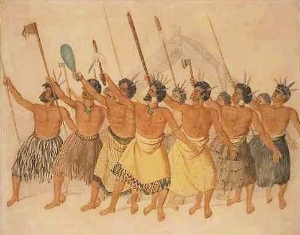 In 1997, Gailbreath, Wagner, Moffett, Rein, and Robert published a study that derived its findings from a large participant pool. For the study, researchers administered the MBTI® form G to 1,755 Army officers who were selected for battalion and brigade command between 1987 and 1989 (1997, p. 224). Although probably based on reported type only, the study indicated a preponderance of ISTJ types (32.93%) within the participant pool. The ESTJ type was the second largest represented in the study with 24.33%. It is also noteworthy that the eight introverted types comprised 54.87% of the entire study. Given these results, Gailbreath et al. concluded that, “Individuals who prefer Sensing-Thinking-Judging behaviors (analytical, logical, and decisive) are disproportionately represented in the senior leadership of the U.S. Army” (p. 226). They added that, “Senior Army leadership may be quite homogeneous because the organization has a distinct preference for leaders who demonstrate Sensing-Thinking-Judging behaviors and systematically selects out leaders who demonstrate Feeling behaviors” (p. 227). Such numbers suggest that at higher echelons, organizational and systemic factors promote certain typological traits while rejecting other ones, and soldiers who do not typify that preference are gradually weeded out through attrition before reaching the senior leadership level. Furthermore, the research indicated that introverts are overrepresented within the samples, which suggests to me that introverts play an equally important role as extraverts in the Army.
In 1997, Gailbreath, Wagner, Moffett, Rein, and Robert published a study that derived its findings from a large participant pool. For the study, researchers administered the MBTI® form G to 1,755 Army officers who were selected for battalion and brigade command between 1987 and 1989 (1997, p. 224). Although probably based on reported type only, the study indicated a preponderance of ISTJ types (32.93%) within the participant pool. The ESTJ type was the second largest represented in the study with 24.33%. It is also noteworthy that the eight introverted types comprised 54.87% of the entire study. Given these results, Gailbreath et al. concluded that, “Individuals who prefer Sensing-Thinking-Judging behaviors (analytical, logical, and decisive) are disproportionately represented in the senior leadership of the U.S. Army” (p. 226). They added that, “Senior Army leadership may be quite homogeneous because the organization has a distinct preference for leaders who demonstrate Sensing-Thinking-Judging behaviors and systematically selects out leaders who demonstrate Feeling behaviors” (p. 227). Such numbers suggest that at higher echelons, organizational and systemic factors promote certain typological traits while rejecting other ones, and soldiers who do not typify that preference are gradually weeded out through attrition before reaching the senior leadership level. Furthermore, the research indicated that introverts are overrepresented within the samples, which suggests to me that introverts play an equally important role as extraverts in the Army.
Another study was published in 1998 on the psychological type distributions of military leaders. Dianna Lee William’s study was smaller in scope but corroborated the findings of the larger study by Gailbreath et al. Williams used the MBTI assessment to extrapolate type distributions in a military population consisting of mid- to senior-level leaders. That study consisted of 80 samples in 1993 and 113 samples in 1994 and included both male and female participants although males comprised the vast majority of the sampling. Both samples yielded a majority of introverted types, yet what stands out most about the study is the concentration of ISTJs within her findings, which represented the largest percentage of MBTI types in both 1993 (21%) and 1994 (25%). Williams’ findings did not coincide with the national normative samples of adults within the United States which showed that ISTJs made up only 11.60% of the general population (Myers & McCaulley, 1998, p. 379). Independently of William’s findings, Kroeger and Thuesen (1992) showed the following:
While ISTJs themselves comprise only about 6 percent of the general population, they comprise about 30 percent of the U.S. armed forces. The ISTJ’s four preferences are found overwhelmingly in the military: the combined army, navy, air force, and marines is 58 percent introverted, 72 percent sensing, 90 percent thinking, and 80 percent judging—ISTJ. (1992, p. 304)
Kroeger’s and Thuesen’s findings are consistent with the results of the 1997 and 1998 studies and their numbers reflect a broader range of military personnel, including both enlisted personnel (i.e., mid-level leaders) and general officers (i.e., senior executives). The dichotomous preferences of Williams’ samples were skewed toward introversion. For instance, 56% of those studied in 1993 displayed a preference for introversion as opposed to extraversion, which was represented by 44% of the test subjects; and in the 1994 study, introverts represented 60% of the population whereas extraverts represented a mere 40%. Furthermore, in Williams’ study, thinking-judging types make up 51% of the participants in the 1993 study and 54% of the participants in the 1994 study.
Kroeger and Thuesen have suggested that organizational factors best explain the disproportionate distribution of typologies at different hierarchical levels. They suggested that the lowest level of any organizational culture is usually the place where we encounter the “broadest spread of the sixteen types” (1992, p. 393). However, as people climb the organizational ladder they will encounter typological clusters. Kroeger and Thuesen attribute this to self-selection (p. 394). In other words, typological clusters dominate the organization at a certain level and tend to attract individuals of a similar type, whereas dissimilar types opt to break with the organization at that level (i.e., self-selection). “Type begets type” (Kroeger & Thuesen, 1992, p. 391). So by the time a person has reached upper management and executive positions, the type distribution becomes far less representative of the general population and displays uneven typological distributions. The distribution of ISTJs at the executive level (32.1%) approximately mirrors the ISTJ results in the 1997 study (32.93%).
Though there was an average eight-point spread between Kroeger’s and Thuesen’s executive type distribution and the executive type distribution found in Williams’ work, I should point out that Williams does not specify the rank or position of her target pool, describing them more generally as “military and civilian executives,” which, given the multiplicity of leadership positions in the Air Force, can refer to any number of leadership billets ranging from middle managers (i.e., non-commissioned officers) to executives (i.e., field grade officers). Thus, if one takes the median average (25%) of all the ISTJ percentages within all of Kroeger’s and Thuesen’s hierarchical model tables (i.e., entry level, middle managers, upper management, and executives), the percentage approximates the average ISTJ distribution (23%) for William’s two-year study. These findings may be chalked up to the attraction-selection-attrition model (Schneider, 1987), which basically means that “organizations attract, hire, and retain people who possess dispositional characteristics such as personality, attitudes, and values” (Gailbreath et al., 1997, p. 222). Again, it seems as though type begets type.
These two studies seem to suggest that at different echelons within the military, one finds uneven type distributions as a result of select organizational factors, which seems to support the idea that typological clusters form at certain organizational hierarchies. Based on the evidence of these studies and my own experience, I conclude that introverts can fare just as well in the Army and military as their extraverted counterparts, and in some ways may fare better.
Individuation in the Military’s Collective Psyche
It seems to me that the central aim of the study of typology, in the Jungian sense, is to gain a better understanding of one’s personality, which is consistent with the Delphic oracle’s admonition to know thyself. Self-knowledge is indispensable to any successful leader whether in service of the military or any non-governmental institution. Thus, it should come as no surprise that the Army encourages its leaders to develop a sense of self-awareness.
Self-awareness is a component of preparing self. It is being prepared, being actively engaged in a situation and interacting with others. Self-awareness has the potential to help all leaders become better adjusted and more effective. Self-awareness is relevant for contemporary operations requiring cultural sensitivity and for a leader’s adaptability to inevitable environmental change. (FM 6-22, 2006, para. 8-40)
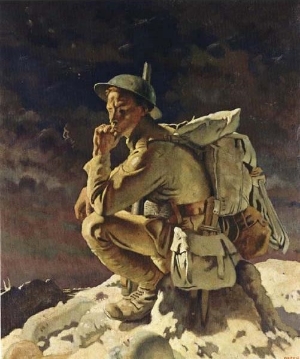 Thus, the Army’s effort to inculcate its leaders with a greater sense of self-awareness is consistent with the central aim of Jung’s individuation process, of which typology is an essential tool. I am of the opinion then that the Army can make major strides if it integrates more typological modalities into its practices and procedures. I should add that the military has already made some progress by instituting type training into programs of instruction at its senior service schools (e.g., War College, Command and General Staff College, etc.). Though this is a step in the right direction, much more can be done to further advance typology in the military, which I believe will assist at fostering team work at all echelons, supporting the commander’s decision making model, and as well as streamlining any number of core military tasks. What the Army refers to as “domain knowledge” encompasses tactical and technical knowledge as well as cultural and geopolitical awareness (2006, para. 2-4). This kind of knowledge alone is not sufficient to address the manifold challenges of an increasingly problematic world. It seems to me that organizations should first enable their leaders with the tools needed to know and master themselves prior to vesting them with the responsibility to lead others—sometimes into harm’s way. Thus, knowledge of one’s personality seems a critical prerequisite to leadership.
Thus, the Army’s effort to inculcate its leaders with a greater sense of self-awareness is consistent with the central aim of Jung’s individuation process, of which typology is an essential tool. I am of the opinion then that the Army can make major strides if it integrates more typological modalities into its practices and procedures. I should add that the military has already made some progress by instituting type training into programs of instruction at its senior service schools (e.g., War College, Command and General Staff College, etc.). Though this is a step in the right direction, much more can be done to further advance typology in the military, which I believe will assist at fostering team work at all echelons, supporting the commander’s decision making model, and as well as streamlining any number of core military tasks. What the Army refers to as “domain knowledge” encompasses tactical and technical knowledge as well as cultural and geopolitical awareness (2006, para. 2-4). This kind of knowledge alone is not sufficient to address the manifold challenges of an increasingly problematic world. It seems to me that organizations should first enable their leaders with the tools needed to know and master themselves prior to vesting them with the responsibility to lead others—sometimes into harm’s way. Thus, knowledge of one’s personality seems a critical prerequisite to leadership.
In the final analysis, I return to my original contention that leadership is founded on what Jung called “those great symbolical principles” which seem to have their roots in the collective unconscious. However, the wisdom attained from the collective past alone is not enough. The military leader of the future will have to be mentally agile enough to adapt to the challenges of the twenty-first century. A better understanding of personality types may be a good place to start since it seems that by developing both extraversion and introversion, the leader stands a better chance to develop his or her latent gifts and those of others.
References
Dembling, S. (2012). The Introvert’s way: Living a quiet life in a noisy world. New York, NY: Penguin Group.
Gailbreath, R., Wagner, S., Moffett, R., Rein, M. & Robert, D. (1997). Homogeneity in behavioral preference among U.S. Army leaders. Group Dynamics: Theory, Research and Practice, Vol. 1, No. 3.
Haas, L., & Hunziker, M. (2006/2011). Building blocks of personality type. Temecula, CA: TypeLabs.
Hillman, J. (1980). Persons as types. In Egalitarian typologies versus the perception of the unique. The Eranos Lectures Series 4. Dallas, TX: Spring Publications.
Hirsh, S., & Kummerow, J. (1989). Life types. New York, NY: Warner Books.
Jacobi, J. (1942/1973). The psychology of C.G. Jung (R. Manheim, Trans.). London: Yale University Press.
Jung, C. G. (1914). On psychological understanding. In H. Read, M. Fordham, G. Adler, & W. McGuire (Eds.), The collected works of C.G. Jung (R. F. C. Hull, Trans.) (2nd ed., Vol. 3, pp. 298-345). Princeton, NJ: Princeton University Press.
Jung, C. G. (1923/1971). Psychological types. In H. Read, M. Fordham, G. Adler, & W. McGuire (Eds.), The collected works of C.G. Jung (R. F. C. Hull, Trans.) (2nd ed., Vol. 6). Princeton, NJ: Princeton University Press.
Jung, C. G. (1928). The persona as a segment of the collective psyche. In H. Read, M. Fordham, G. Adler, & W. McGuire (Eds.), The collected works of C.G. Jung (R. F. C. Hull, Trans.) (2nd ed., Vol. 7, pp. 154-160). Princeton, NJ: Princeton University Press.
Jung, C. G. (1934/1954). The archetypes and the collective unconscious. In H. Read, M. Fordham, G. Adler, & W. McGuire (Eds.), The collected works of C. G. Jung (R. F. C. Hull, Trans.) (2nd ed., Vol. 9i, pp. 3-41). Princeton, NJ: Princeton University Press.
Jung, C. G. (1938/1954). Psychological aspects of the mother archetype. In H. Read, M. Fordham, G. Adler, & W. McGuire (Eds.), The collected works of C.G. Jung (R. F. C. Hull, Trans.) (2nd ed., Vol. 9i, pp. 75-90). Princeton, NJ: Princeton University Press.
Jung, C. G. (1943). The gifted child. In H. Read, M. Fordham, G. Adler, & W. McGuire (Eds.), The collected works of C.G. Jung (R. F. C. Hull, Trans.) (2nd ed., Vol. 17, pp. 151-181). Princeton, NJ: Princeton University Press.
Jung, C. G. (1957). The undiscovered self. In H. Read, M. Fordham, G. Adler, & W. McGuire (Eds.), The collected works of C.G. Jung (R. F. C. Hull, Trans.) (2nd ed., Vol. 10). Princeton, NJ: Princeton University Press.
Kroeger, O., & Thuesen, J. (1992). Type talk at work. New York, NY: Delacorte Press
Myers, I., & McCaulley, M. (1998). MBTI manual: A guide to the development and use of the Myers-Briggs Type Indicator. (3rd Ed.). Palo Alto, CA: Consulting Psychologists Press.
Schneider, B. (1987). The people make the place. Personnel Psychology, 40: 437-453.
U.S. Army. (2006). FM 6-22: Army leadership. Washington, DC: Headquarters, Department of the Army.
Williams, D. L. (1998). Frequencies of Myers Briggs Type Indicator (MBTI) among military leaders. The Journal of Leadership Studies, 5(3).
Images
Master of Trevon altar, Resurrection of Christ, detail (c. 1380-1390). Convent of Saint Agnes of Bohemia (Prague).


